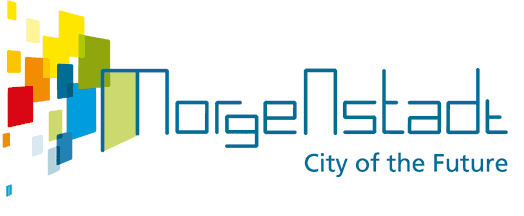Drive toward a viable “City of the Future”
Cities consume energy and raw materials, produce waste and pollutants, and overload their transportation systems. Fraunhofer researchers have now combined forces in the innovation network German for “Morgenstadt” (or “City of the Future”), in order to engineer innovative urban technologies and systems.

The urbanization of the world continues to evolve – not only in emerging nations, but in the industrialized world like Europe as well. Already more than half of all the earth‘s inhabitants live in cities; by 2030, it will be 60 percent. As densely populated sites of human cohabitation, cities are ecological and social tinder boxes. Experts believe that the need for urban space will double by 2050. Megacities also generate megaproblems: With an insatiable appetite, they consume energy, raw materials and space – in addition to producing pollutants, wastewater streams and mountains of rubbish. The transportation system is overloaded, resulting in overcrowding, lack of parking and traffic jams.
On the other hand, modern metropolises are the pioneers of transformation: They play a key role in coping with the tremendous challenges of the 21st century, since they are constantly on the verge of major changes that affect the metropolis itself, as well as its surroundings.
A number of technological developments – such as renewable energy production, energy storage, electromobility, plus-energy homes, as well as innovative information and communications platforms – contribute to future progress. The core challenge is not only figuring out how to optimize these technologies, but also learning how to guide them to a holistic, systemic approach. The Fraunhofer-Gesellschaft can rapidly network disparate competencies, and reinforce them in a targeted manner. That‘s why it is taking on a key role in the forward-looking project: „The CO2-neutral, energy-efficient and climate-adapted cities“ defined by the German Federal Government.
In Germany, energy and resource consumption is also concentrated in the urban realm. Almost 75 percent of Germany‘s entire population lived in cities in 2011. The idea of focusing future research and innovation policies on ecologically retrofitting today‘s cities emerged from the “Industry-Science Research Alliance” that is headed by Fraunhofer president Prof. Hans-Jörg Bullinger, together with Stifterverband president Dr. Arend Oetker. On behalf of the German Federal Ministry of Education and Research BMBF, a multidisciplinary group of experts developed a vision for the future: “Morgenstadt: A response to climate change” and worked out the underlying recommendations for action for this project.
With its “Action Plan for the 2020 Hightech Strategy,” at the end of March 2012 the German Federal Government set the pace for the implementation of ten future projects. The Morgenstadt project is included among these most important political topics. This plan is closely connected with the federal government‘s sustainability strategy, energy policy and the current energy research program.
Ten Fraunhofer institutes already started on the “Fraunhofer Morgenstadt Initiative” last year. “We believe that the sustainable development of our cities and communities is a major lever for a society that is prepared for the future,” explains Hans-Jörg Bullinger. “Through a decisive, shared approach to politics, economics and society, Germany can position itself as the global lead supplier of sustainability technologies for the cities of the future.”
A long-term strategy of sustainability demands the synchronization of short-term cycles – such as those in information and communications technologies – with long-term cycles – such as buildings or transportation infrastructures. Previously, these ran more independently of each other. For that reason, the “Fraunhofer Morgenstadt Initiative” developed a strategic model for action in which hitherto disconnected systems are adapted and supplemental key technologies are researched. “In our vision of Morgenstadt, we are not considering completely new models, rather the retrofitting and expansion of existing structures. And in our deliberations, we are always incorporating the surrounding environs; this means we consider the city as a part of an overarching urban network, within which innumerable interrelationships and interdependencies exist,” says Bullinger.
The functional organization of cities with the spatial separation of work, home life, shopping and culture is a dysfunctional vestige of the past century. Wide boulevards for cars slice up the urban space, so that masses of humans can be sent here and there, among the monotonous residential districts, commercial areas and sterile downtowns. And the burgeoning of suburbia into the open countryside ensured even more streams of traffic. So what will the transportation system of the future look like – one that connects mobility with a maximum of individuality and a minimum of emissions and space utilization? Fraunhofer scientists are working assiduously on this and many other topics like energy efficiency, renewable energies and closed resource cycles. They are researching and developing new planning, control and value creation models. One key aspect in this regard: all future infrastructures should be as reliable and mutable as possible.
The increasing networking of all components of future cities will lead to the evolution of Smart Cities, whose processes can be operated in a highly efficient manner. Researchers are working on the idea of sustainable, livable and future-oriented cities where one can go to work, live, shop, eat or take a walk – all within a short distance. Ultimately, this matter relates to revitalizing the centers through their most important resource: people.
“We have to turn car-cities back into people-cities that are tranquil, have a minimum of traffic, and are largely free of emissions. And we need material flows that consume few resources and produce little waste,” states the Fraunhofer president. “The human being stands at the center: he or she wants to live healthy, feel well, interact with other human beings and be able work productively. Technology should support these basic needs.”